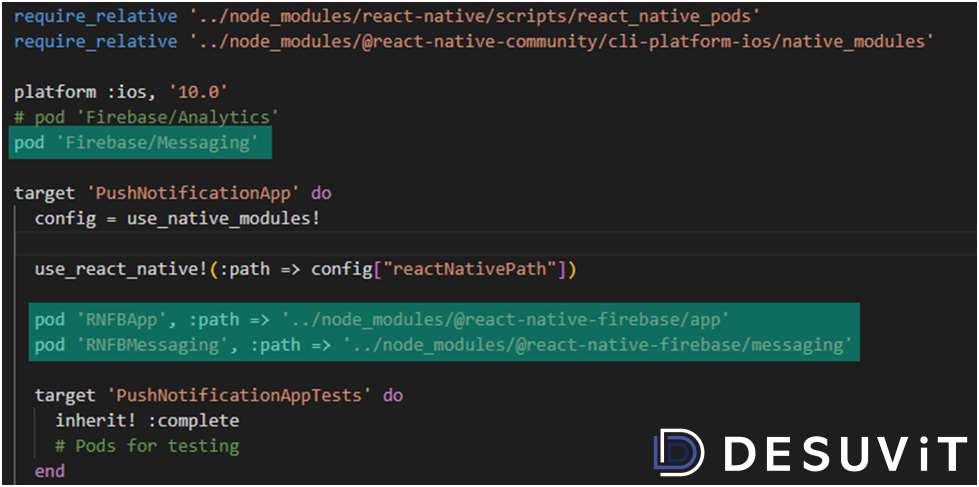

- #REACT NATIVE IOS POD FILE HOW TO#
- #REACT NATIVE IOS POD FILE INSTALL#
- #REACT NATIVE IOS POD FILE FOR ANDROID#
- #REACT NATIVE IOS POD FILE CODE#
It’s now time to dive into the meat of the project.
#REACT NATIVE IOS POD FILE CODE#
It generates all the bolierplate code needed to get started right away with your app development process.
#REACT NATIVE IOS POD FILE INSTALL#
-g: It denotes or says NPM to install create-react-native-app globally in the system.install: Install is used to give a command to NPM to install a package.npm: (Node Package Manager, which manage all your package from installing to deleting).Open up your command line in VS Code using Ctrl + ~ in Windows or go to the terminal on the menu and click on Add a new terminal.
#REACT NATIVE IOS POD FILE HOW TO#
How to install React Native on to your local system? Let’s install the React Native on to our system. create-react-native-app, (A CLI command line tool to install React Native on to your system.) Node JS (As always needed to install packages & other stuff)ģ. Text Editor or IDE (We are using Visual Studio Code)Ģ. What are the things you need to integrate React Native Maps?ġ. Let’s begin with create-react-native-app.

We’re assuming that you have at least basic or intermediate knowledge of JavaScript, React & React Native.

So, without further ado let’s get started. You’ll also learn how to build a brand new React Native app from scratch. I would say one thing after reading the whole tutorial you can easily integrate google maps with React Native as well. It is very easy to integrate such modules in native code bases like Java or swift. You just need the QR Code generated by your application when you run using npm start.
#REACT NATIVE IOS POD FILE FOR ANDROID#
You only need to develop the code and test using the expo app built for Android and iOS. You don’t need any device (not even simulators) to run and test the apps. This is a hassle-free environment for developing apps faster.

You might generate a lot of bugs while installing various rpm packages and configuring them.Ĭreate-react-native-app, you can expo SDK built-in modules. Apart from this, if you want to test your application then you have to use the real device or you have to use simulators for both iOS and Android. But with this, you have to configure every small bit in the application. React-native-cli is developer friendly and gives the flexibility to use native components. There are a few differences between these two that I would like to clear. There are two ways to integrate Google Maps into a React Native mobile app: I’m not going to dig in deep in about react and react native stuff in the article, instead, we will focus more google maps integration on both platform apps, iOS and Android. So, these days in mobile app development there are platforms like React Native you can apps for both iOS and Android. Today, we are going to integrate Google Maps in a React Native app step by step, using the popular React Native Maps package.Īt Instamobile, we are using this exact implementation in many of our React Native templates, such as the Store Locator app templates.Īs a developer or a company, it is very important to manage their app’s codebase. So, it shows the importance of maps support in mobile apps. Some mobile apps are displaying their outlet locations, track users (like Uber), showing nearby places, etc. You might have seen Google Maps in almost all the apps these days.


 0 kommentar(er)
0 kommentar(er)
